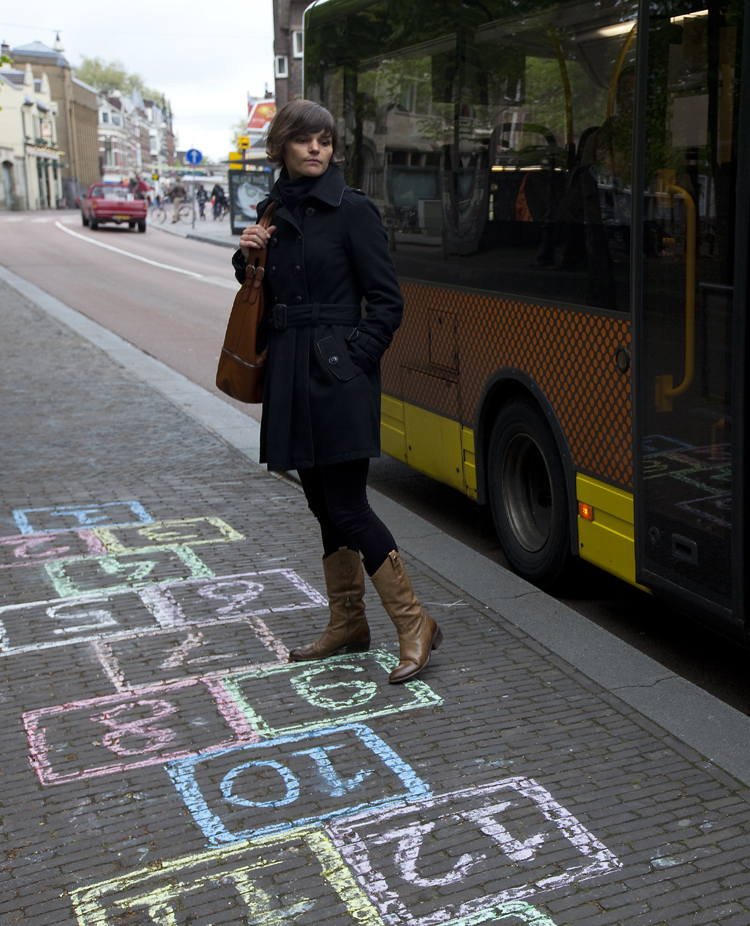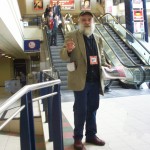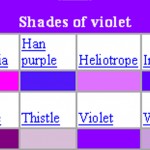Went to Utrecht by train, so I had a chance to try and find a…
Curiosity and the Ae word
 In my essay I want to write about curiosity and fun as forces behind people’s decision to become players in my games. For in doing experiment no 007 I discovered there are three kinds of people:
In my essay I want to write about curiosity and fun as forces behind people’s decision to become players in my games. For in doing experiment no 007 I discovered there are three kinds of people:
1. people that don’t even see the games I draw. Their minds edit out what their eyes must have noticed, minds being busy with other things at the time. To quote myself from the Straatnieuws article: “their heads are not where their feet are” (30%).
2. people that see the games but decide not to play (40%). Note: find out why – ask them.
3. people that see the games and decide to play (30%). This can translate to a small skip into an otherwise uninterupted walk – and I love these moments best – all the way to gigantic leaps like this one businessman took at Jaarbeursplein. Note: capture the small moments on video?
So I became curious as to what motivates people (not) to play, and am presently speculating about the joint forces of curiosity, playfulness and fun.
“Playful forms are without exeption forms of repetition” “In art, play is from the outset disciplinary” . This is Galloway quoting Theodor Adorno’s “Aesthetic Theory”. So I checked Adorno, he’s a sociologist and philosopher, friend of Habermas, Marcuse and Benjamin, all household names for an MA student. Found a good translation of Adorno’s Áesthetic theory’ on the ‘net. A quote:
“The aesthetic force of production is the same as that of productive labor and has the same teleology (purpose, aim); and what may be called aesthetic relations of production – all that in which the productive force is embedded and in which it is active – are sedimentations or imprintings of social relations on production.” (Theodor Adorno ‘Aesthetic Theory’ page 6)
So my using the AE word opened up a whole new can of worms – interesting worms, but new.
This is good, as my personal history with aesthetics is none too promising. In my first years at art school I came to be wary of it – I learned not to brighten up when a teacher said “this looks very aesthetic to me”. Things had to look convoluted, unfinished, confusing or downright ugly to be taken seriously, and my penchant for clear and simple forms often got me in trouble. Simplicity of form was taken for simplicity of meaning. Which I don’t agree with, and don’t think I ever will: an elegant proof, in mathematics, is a clean and simple one.
Back to aesthetics: “Whoever concretely enjoys artworks is a phillistine; he is convicted by phrases like ‘a feast for the ears’. Yet if the last traces of pleasure were extirpated (pulled up by the roots), the question of what artworks are for would be an embarrassment.” (page 15)
Big question for today: is aesthetics a means or an end?
| « Double Solo video | <-- previous post | next post --> | Straatnieuws on the street » |
|---|







